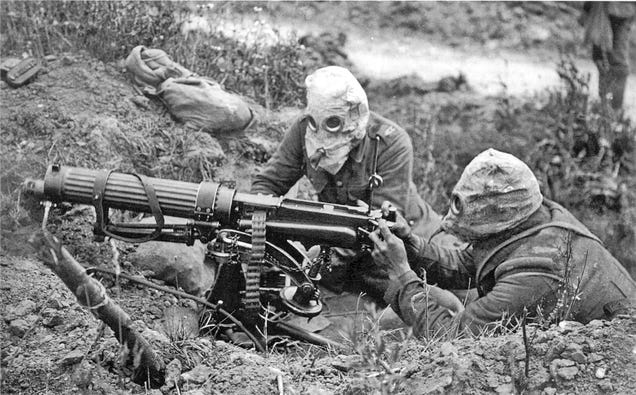 Expand
ExpandThis year marks the centenary of the start of the First World War, a conflict that still rouses considerable debate and controversy. It's also a war that's shrouded in many myths and misconceptions — and these ten are among the worst.
Above: Vickers machine gun crew with gas masks at the Battle of Somme.
1. "Most soldiers were killed by machine guns"
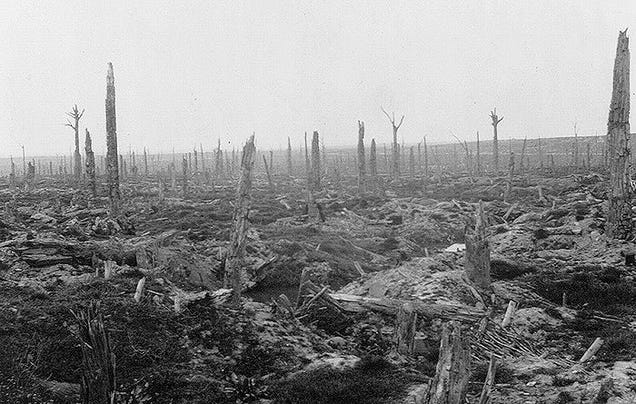 Expand
ExpandA view of Flanders Field in Belgium - what used to be a forest. It's the result of countless artillery strikes by German and British heavy guns.
No doubt — the introduction of the machine gun irrevocably changed the way war is fought. But its impact has been exaggerated over the years. As early as the American Civil War, massed troops were already creating a similar effect by using rifles to deliver impenetrable walls of bullets.
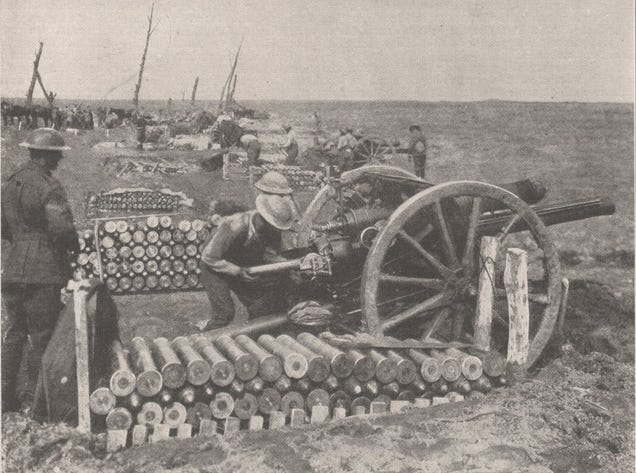 Expand
ExpandA British 18-pounder.
Rather, the real difference maker during the Great War was the prolific use of artillery. It has been estimated that two-thirds of all casualties were caused by artillery. Use of this weapon was so intense that, during the early days of the war, some 40,000 shells were used in a single day.
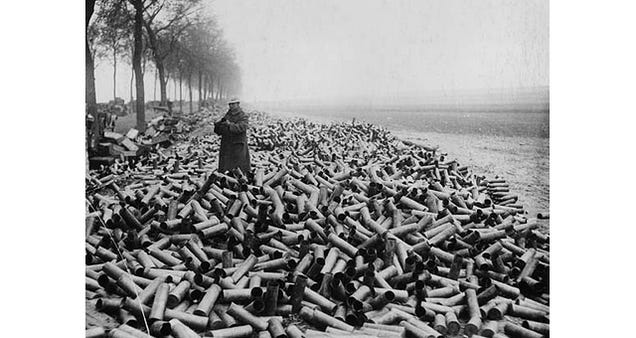
2. "The Germans invaded Belgium and France using the Schlieffen Plan"
Instead, it would be more accurate to say they used the Schlieffen-Moltke plan, or just the Moltke Plan.
Indeed, Count Alfred von Schlieffen, the creator of the famous plan that bore his name, would have rolled in his grave if he were to see how his strategy was twisted by Helmuth von Moltke during the opening stages of the Great War. A critical feature of the plan was to keep the right wing of the German Army as strong as possible — the veritable hammer blow meant to crush the Allied forces in the north. So critical was this element to the plan that Schlieffen's last words are reported to be, "remember to keep the right flank strong."
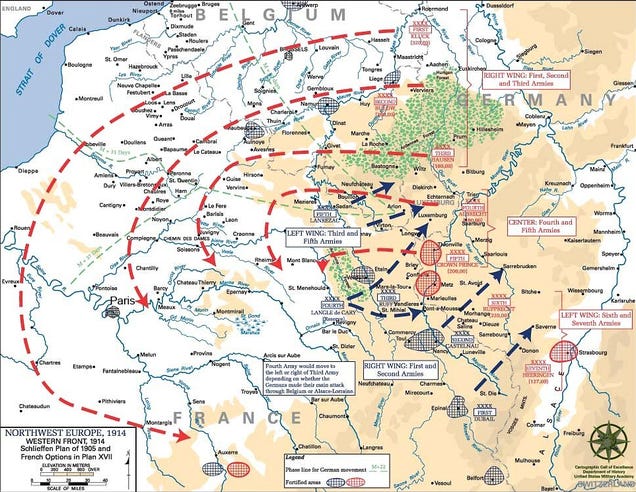 Expand
ExpandHistorians argue about whether or not Schlieffen's plan would have worked in any incarnation, but Moltke's version guaranteed its failure. The primary adjustment made by Moltke saw the drawing of a significant number of troops away from the hammer portion as a means to strengthen German forces in Alsace-Lorraine (the so-called "hinge" region). But Schlieffen's plan deliberately called for a weak left flank as a way to lure the French army into Germany territory (for eventual envelopment). Instead, the reinforced left kept the French in action closer to the German 1st and 2nd armies threatening Paris. The end result was the Miracle of the Marne, the establishment of static warfare, a war on two fronts (which was precisely what the plan was supposed to prevent), and the eventual defeat of Germany.
Related: 10 Shocking Ways the Second World War Could Have Ended Differently | The 8 Worst Mistakes Made by the Axis During World War II
According to historian L.C.F. Turner, Moltke's changes were "a substantial modification in the Schlieffen Plan and one which probably doomed the German campaign in the west before it was ever launched."
3. "All the warring was done from the trenches"
After the First Battle of the Marne and the Race to the Sea, the Western Front regressed into horrific trench warfare. It largely stayed this way until 1918 when, with the German army utterly exhausted and depleted, and with the Allies thus able to implement new new offensive tactics, the war was made mobile once again.
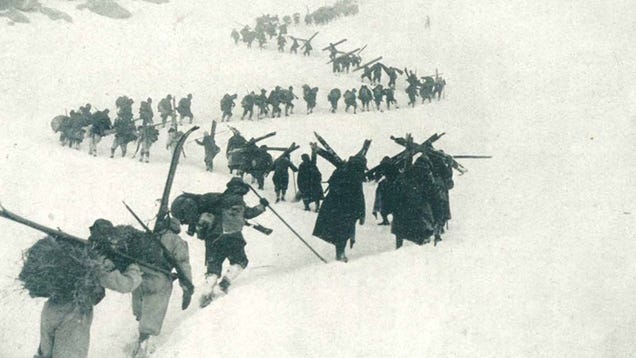 Expand
ExpandMountain warfare in the Italian theatre of war. Are we having fun yet?
But that was the story in the west. The situation was far different on the opposite side as witnessed by the monumental clashes fought in the various theatres in the east and south. There were good reasons for this, including the nature of the landscape and the tactics applied.
The battles in-and-around Prussia, Poland, and Ukraine were strung along an extended front, which never necessitated the need for trenches. What's more, Russian General Alexsei Brusilov developed tactics in which broad-front deployments spread his enemy and, by forcing them to cover a wider front, diminished the density and depth of their defences. According to historian Stephen Walsh, Brusilov "rehabilitated the Russian Army with intelligent and innovative command," and that "the Russians had succeeded in breaking the deadlock of trench warfare at the operational-tactical level."
Meanwhile, as battles raged in the Italian offensive on the Isonzo river (1916-17), soldiers were forced to fight on Alpine glaciers, mountains, and caves [cool fact: my Slovak great-grandfather was there fighting for Austria-Hungary]. And of course, the war in the Middle East and Africa never featured anything resembling trench warfare.
4. "Trench warfare simply involved 'going over the top'"
The popular image of the Great War involves heartless generals ordering their soldiers to climb out of their trenches and storm the enemy in a futile bayonet charge — and that this pattern was mindlessly repeated wave after wave after wave. Like many myths, there is a modicum of truth to this conception — but there was considerably more to trench warfare than that.
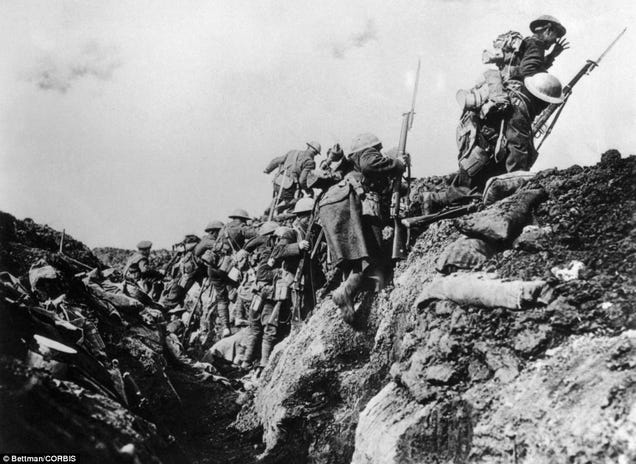 Expand
ExpandAn evolving set of tactics were increasingly incorporated, such as the use of creeping artillery barrages (where artillery fire creates an advancing "curtain" in front of advancing troops), increasing reliance on air warfare, flexible defensive configurations that didn't rely on trenches, and the German innovation of Sturmtruppen, or stormtroopers — highly specialized shock troops who could infiltrate weak points in the enemy line.
5. "Soldiers lived in the trenches for prolonged periods"
No they didn't. Given the insanely harsh conditions, both psychological and physical, soldiers were regularly rotated in-and-out of the fire-line trenches (the first trench in a series of several defensive lines). Each nation had different policies when it came to these rotations, and they changed depending on the circumstances. During the Battle of Verdun, for example, French troops were progressively moved down the four-line series of trenches once a week for a one month cycle. British soldiers spent about 10 days a month in the trench system, and of those, rarely more than three days at the front line. Also, it wasn't unusual to be out of the line for a month.
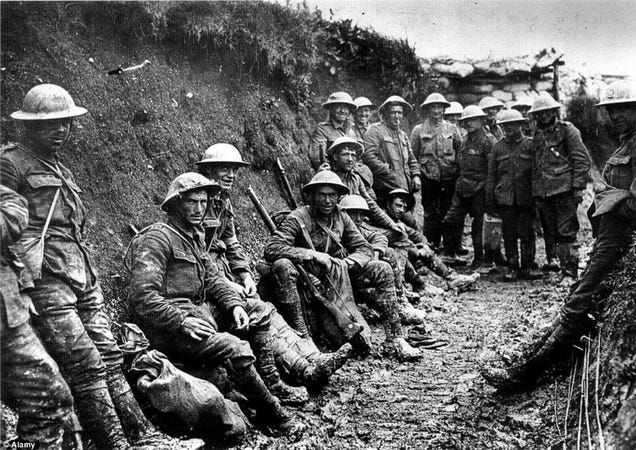 Expand
ExpandA French trench.
So, when it came time to 'go over the top,' say for a major battle, it was a matter of being at the wrong place at the wrong time.
But, for the most part, life in the trenches was quite dull. Dan Snow describes a typical day in a trench:
The average day began with 'stand to' before dawn. Gathering their weapons, soldiers took a place on the 'fire step', and as the sun rose, fired towards enemy lines in a daily ritual called the 'morning hate'. After breakfast, the men worked on chores, from sentry duty to trench maintenance, spending their spare time catching up on sleep or writing letters. The 'stand to' was repeated at nightfall before groups were sent into the treacherous and deadly No Man's Land. Others fetched rations, went on sentry duty, or left the firing line altogether. In all, most battalions rarely spent more than five days a month in the line of fire.
6. "The war in the desert only involved isolated skirmishes"
Definitely not true. This was a campaign made famous by the intrepid actions of T. E. Lawrence ("of Arabia"), one that conjures images of dashing desert raids and adventures — and one primarily fought with tribal forces. But there was more to this desert conflict than isolated insurgent attacks.
 Expand
ExpandAs historian David Murphy has noted, "Modern scholarship has forced a major revision of these perceptions while the archaeological evidence of the Great Arab Revolt is gradually uncovering the physical evidence of a major desert campaign." Indeed, by 1918, this theatre of war represented a large and impressive operation that included the use of Arab regular forces, light armor, truck-mounted artillery, an increasingly sophisticated use of artillery and support weapons, and the integration of aircraft. It also assisted offensives carried out by the Egyptian Expeditionary Force in 1917 and 1918. What's more, it served as a model for desert operations during World War II.
7. "All generals were incompetent and callous"
In a war that forced all nations to transition their military from traditional institutions into modern fighting forces, it's not surprising that many generals didn't appreciate the extent to which adaptations were required, leading to the "lions led by donkeys" meme. During the open salvo of the war, as hundreds of thousands of soldiers were massacred, the generals were adhering to long-honored doctrine — not just as a perceived way to achieve victory, but also as a means to preserve their forces. Like everyone else, they were shocked to see the horrific losses caused by the new technologies.
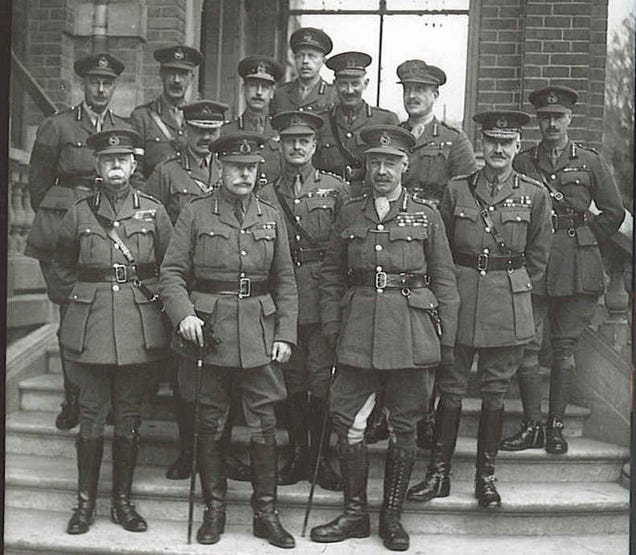 Expand
ExpandBEF Commanders, 1918.
Eventually, as the need for change became clear, all sides pulled back in favor of more self-preservational and (arguably) rational tactics. And in fact, realizing he was losing a war of attrition, Erich Ludendorff introduced an entirely new set of defensive measures in 1917 designed to minimize human and matériel wastage.
Yes, the Battle of the Somme was an unmitigated catastrophe, but it overshadows the many ways in which the war evolved over the course of its four long years. While all combatant nations featured generals of astounding stupidity and short-sightedness, they also featured generals who understood the need for innovation and adaptation. And indeed, by the end of the conflict, with the introduction of aircraft, tanks, and new defensive and siege techniques, the war scarcely retained any of its early characteristics.
What's more, the war also featured some highly skilled generals, such as Russia's Brusilov, France's Ferdinand Foch, Canada's Arthur Currie (easily the most underrated general of the war), and Germany's Erich Ludendorff (at least early in the war when he and Hindenburg were ravaging Russian troops), Paul von Lettow-Vorbeck, and many others.
8. "The Great War was a single, coherent conflict"
The First World War was not a single engagement between two groups of allies. As it progressed, it drew more nations into the conflict — including those who used it as an opportunity to achieve national ends. Good examples of this include the entry of the Ottoman Empire into the war and the Arab Revolt. Historian Gary Sheffield puts it best, writing that:
While the Allied war against the Ottoman Empire had many points of contact with the war with Germany, it was pursued for rather different reasons. The conflict with Germany was primarily concerned with preventing a bid for hegemony in Europe, while the Russians, British and French fought the Turks in large part out of motives of imperial expansions. Then there's the Arab Revolt to consider, a reaction against Ottoman rule, and one fueled by Allied interests.
9. "It was the deadliest war to that point"
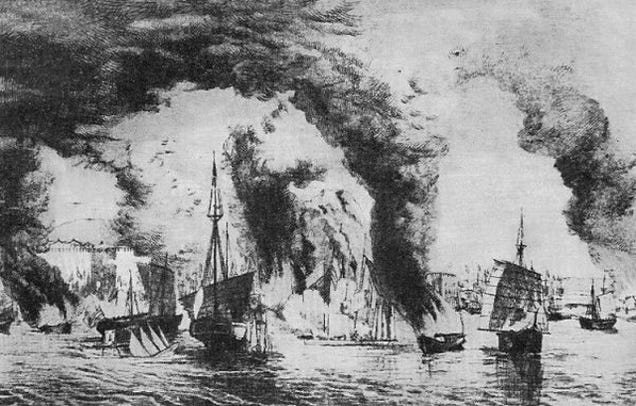
Historians are still trying to figure out the death toll exacted by the Great War. Estimates range from 9 to 17 million, a figure that includes both military and civilian deaths.
But as Dan Snow correctly points out, China's 14-year Taiping Rebellion (1850-1864) claimed the lives of a jaw-dropping 20 to 30 million people.
10. "The Great War was futile"
Hardly. This misconception can be attributed to a number factors.
First, the reasons for the war are multifaceted and complex, leading to confusion about its causes and ultimate legacy.
Also, the Allied victory largely re-established the existing status quo — giving the illusion that nothing was gained or altered in the large scheme of things (well, unless you consider Russia — a country that lost its monarchy to the Bolshevik revolution). Indeed, international geopolitics would have been considerably different had Germany and Austria-Hungary won the war, setting a dramatically different stage for the 20th Century.
Thirdly, the war is often seen as futile because it was most certainly that for the millions of people who were negatively affected by it, whether they be soldiers or civilians.
Finally, because Germany re-ignited the conflict a generation later, the Great War is sometimes seen as a failure, or an unresolved conflict. But that was a failure of Versailles and the international community's unwillingness and inability to enforce it.





No hay comentarios:
Publicar un comentario